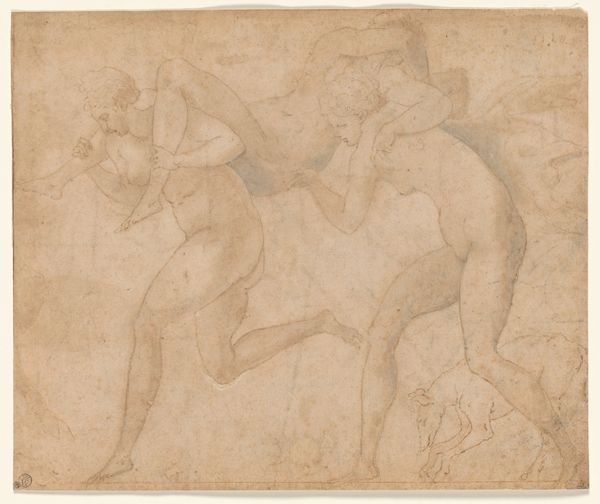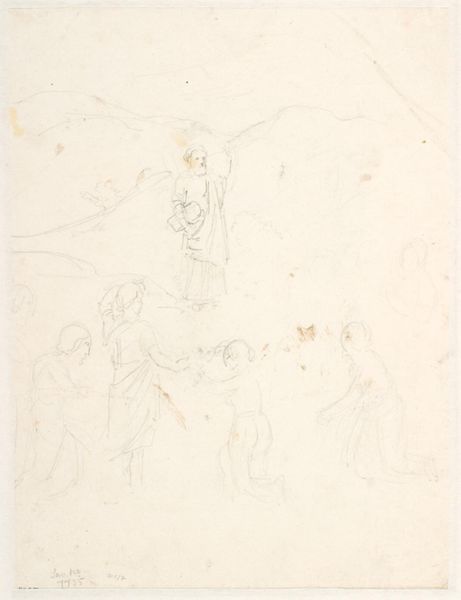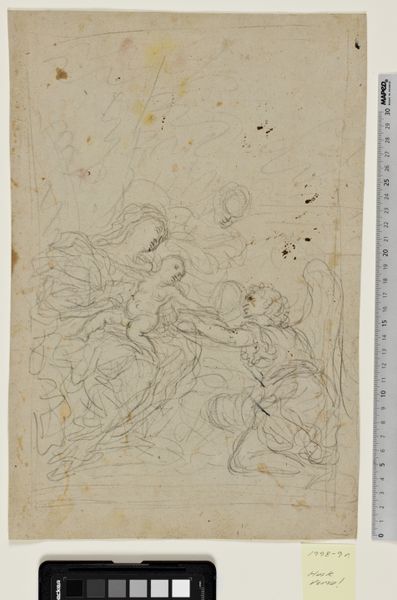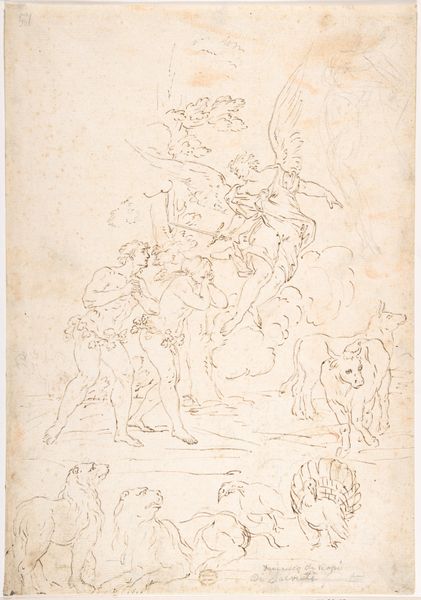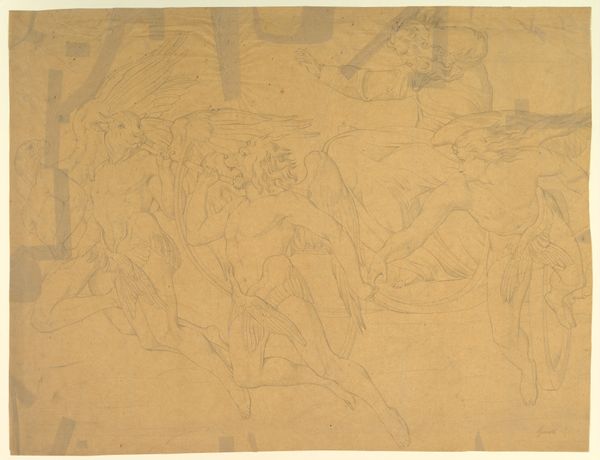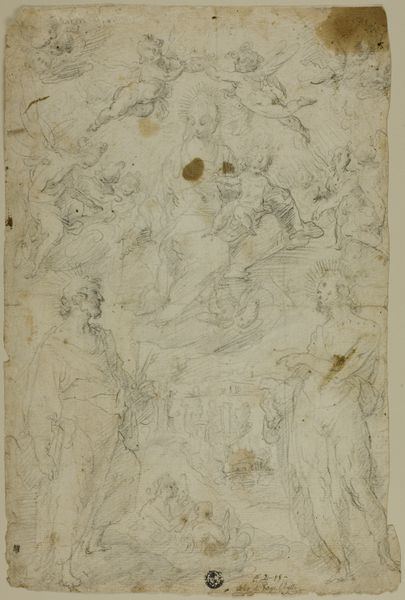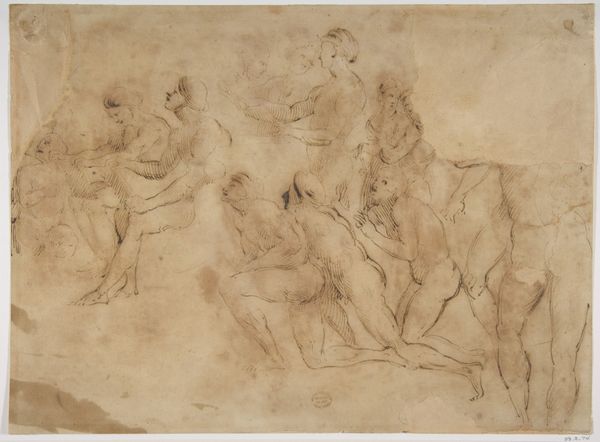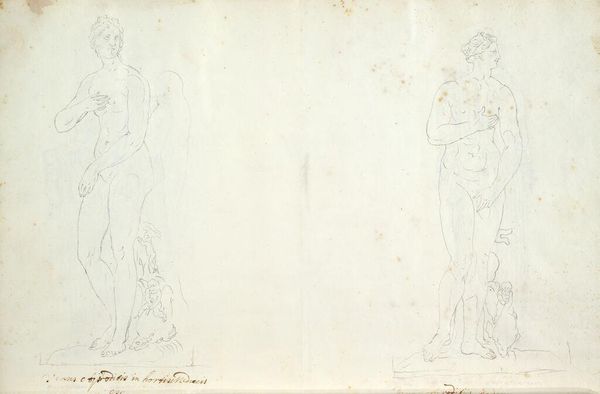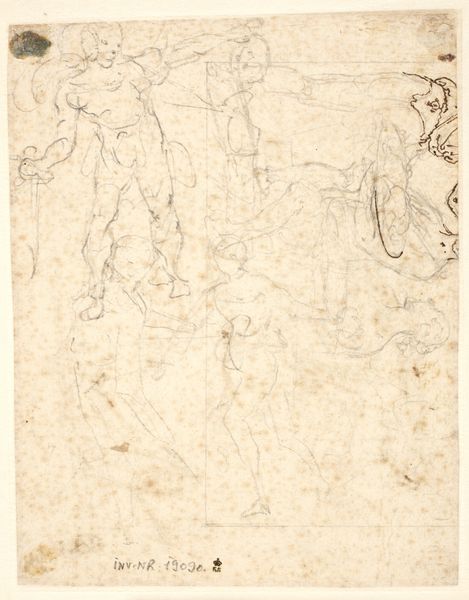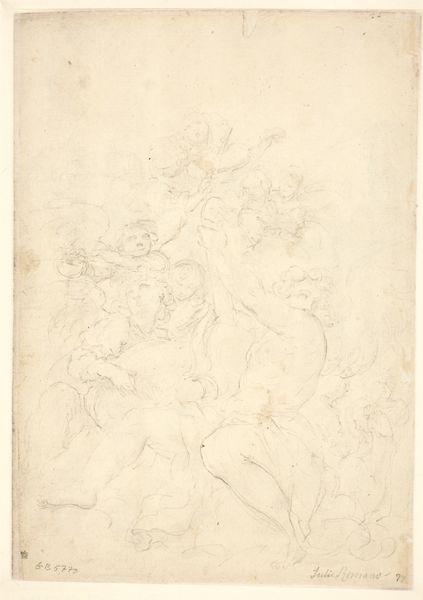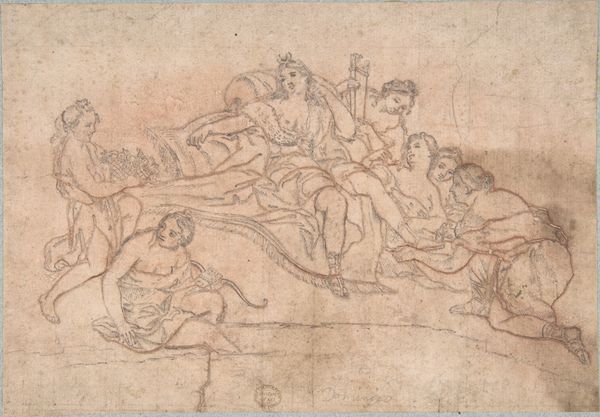
Studies for Apollo and Daphne, Zeus and Juno, Orpheus and Eurydice and other figures (recto and verso) 1560 - 1608
0:00
0:00
drawing, print, paper, ink
#
drawing
# print
#
figuration
#
paper
#
ink
#
history-painting
#
italian-renaissance
Dimensions: two sheets on a single mount: 23 3/4 x 16 3/4 in. (60.3 x 42.5 cm) top sheet: 11 x 8 5/8 in. (27.9 x 21.9 cm) bottom sheet: 9 3/8 x 8 5/8 in. (23.8 x 21.9 cm)
Copyright: Public Domain
Editor: This is "Studies for Apollo and Daphne, Zeus and Juno, Orpheus and Eurydice and other figures" by Giovanni Ambrogio Figino, made sometime between 1560 and 1608. It’s an ink drawing on paper. It's so full of movement, with all these figures sketched out. What can you tell me about the significance of choosing mythological subjects during this time? Curator: Well, the Renaissance was fascinated by classical antiquity. Mythology offered artists a rich vocabulary to explore themes of love, power, and morality, and the public ate it up! These stories provided recognizable narratives that could be used to examine contemporary social and political issues. Consider the politics of imagery here – who were these images made for and what power structures are they subtly reinforcing by looking back to a classical past? Editor: So it wasn't just about aesthetics; it was also about saying something about the artist's present through these historical references. Are there any contemporary political analogies at play in Figino's mythological compositions? Curator: Exactly. Think about patronage during the Italian Renaissance. Artists were often commissioned by wealthy families or the Church. These mythological scenes, while seemingly detached, could reflect the patron's aspirations to power and prestige. The choice of certain myths, certain compositions, would always have meaning in that contemporary cultural context. Are they identifying with Jupiter, perhaps, or commenting on ideas around virtuous women? Editor: I see, it's all connected – the artist, the patron, the stories themselves, and what's going on in society at the time. Thanks for pointing that out; it really opens up the work. Curator: Absolutely. Seeing the social forces behind the creation helps unlock its meaning for contemporary audiences.
Comments
No comments
Be the first to comment and join the conversation on the ultimate creative platform.

